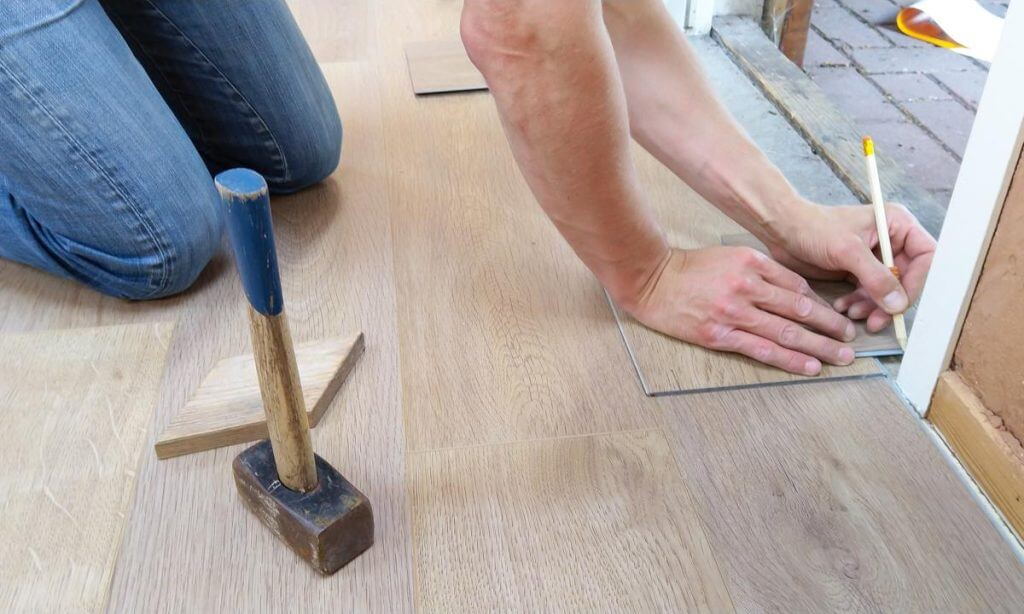Renovating a house can be an exciting and rewarding project, but it also comes with its fair share of challenges. Whether you’re planning to transform your current home or have purchased a fixer-upper, a successful renovation requires careful planning, budgeting, and execution. In this article, we’ll guide you through the essential steps to renovating a house, from assessing the property’s condition to completing the final touches.
1. Assessing the House
Before diving into any renovation project, it’s crucial to thoroughly assess the house’s condition. Start by checking for the following:
- Plumbing: Look for any signs of leaks, water pressure issues, or outdated plumbing systems.
- Electrical: Inspect the electrical wiring, outlets, and switches for safety and functionality.
- Automation: Check if there are any home automation systems in place that might need upgrading or integration.
- Roof: Examine the roof for any leaks, missing shingles, or signs of wear and tear.
- Heating and Cooling: Evaluate the heating and cooling systems to ensure they are working efficiently.
- Water Heater: Check the water heater’s condition and consider upgrading to a more energy-efficient model if necessary.
- Ventilation: Assess the ventilation system to ensure proper airflow and indoor air quality.
- Insulation: Check the insulation in the walls and attic to improve energy efficiency.
- Structural or Foundation Upgrades: Look for any signs of foundation issues, such as cracks or settling, and address them appropriately.
Identifying these issues early on will help you plan the necessary repairs and allocate your budget accordingly. Additionally, take note of any other problematic areas that may need immediate attention.
2. Budgeting and Planning
Renovations can quickly become costly, so setting a realistic budget is essential. When budgeting for your renovation, consider the following estimates:
- Materials: Allocate around 40% of your budget to materials such as flooring, paint, fixtures, and other building supplies.
- Labor: Plan to spend approximately 30% of your budget on skilled labor, including contractors, electricians, plumbers, and other professionals.
- Unexpected Expenses: Set aside about 10% of your budget as a contingency for unforeseen costs or changes in the project scope.
- Permits and Fees: Account for approximately 5% of your budget for building permits, inspection fees, and any other necessary paperwork.
- Design and Planning: Allocate around 5% of your budget for design services, architectural drawings, and planning expenses.
- Miscellaneous: Set aside about 10% of your budget for miscellaneous expenses, such as cleaning, hauling, and small purchases during the renovation.
With a clear budget in mind, you can plan the renovation accordingly and avoid overspending. Creating a detailed renovation plan is equally important. Outline the changes you want to make in each room and prioritize the essential upgrades. Having a comprehensive plan will keep your project on track and ensure that all necessary tasks are completed efficiently.
3. Hiring Professionals vs. DIY
One of the crucial decisions you’ll face is whether to hire professionals or tackle the renovation yourself. Each option comes with its own set of pros and cons:
Hiring Professionals
Pros:
Expertise: Skilled contractors bring expertise and experience to the table, ensuring high-quality work and adherence to building codes.
Time-Saving: Professionals can complete the renovation efficiently, saving you valuable time and reducing the overall project duration.
Warranty and Guarantees: Reputable contractors often provide warranties or guarantees for their work, giving you peace of mind.
Access to Resources: Contractors have access to a network of suppliers and can source materials at better prices.
Cons:
Cost: Hiring professionals can be more expensive, especially for extensive renovations or specialized tasks.
Less Control: You may have less control over the project timeline and execution compared to doing it yourself.
Read How Much Does It Cost To Renovate A House
DIY Renovation
Pros:
Cost-Effective: DIY renovation can save money on labor costs, especially for smaller projects.
Sense of Accomplishment: Completing a renovation on your own can be highly rewarding and give you a sense of accomplishment.
Flexibility: You have the freedom to make spontaneous design decisions and adjust the project as you go.
Cons:
Time-Consuming: DIY renovations may take longer to complete, especially if you have limited time available.
Skill and Knowledge: Some tasks may require specialized skills or knowledge, which could lead to potential errors.
Safety Concerns: Without professional training, there is a higher risk of accidents or mistakes during the renovation.
Consider your skills, available time, and the scope of the project before making this decision. If the renovation involves complex tasks like electrical and plumbing upgrades or requires adherence to specific regulations, hiring professionals may be the better choice. It’s also wise to get quotes from professionals to compare the costs and benefits before making a final decision.
4. Obtaining Necessary Permits
Depending on the scope of your renovation, you may need to obtain permits from your local authorities. Major structural changes, electrical work, or plumbing upgrades typically require permits to ensure compliance with building codes. Failing to secure the necessary permits can result in legal issues and difficulties when selling the property in the future.
5. Demolition and Preparation
Once you’ve obtained the required permits, it’s time to begin the demolition and preparation phase. Clear out the space by removing furniture, fixtures, and any other items not needed in the renovation. Take care to salvage materials that can be reused or recycled to reduce waste and expenses.
6. Electrical and Plumbing Upgrades
Upgrading electrical and plumbing systems should be a priority during a house renovation. Outdated wiring and plumbing can pose safety hazards and lead to costly repairs down the line.
Hire licensed professionals for these tasks to ensure compliance with safety standards and building codes.
7. Walls, Floors, and Ceilings
Choosing suitable materials for walls, floors, and ceilings is essential to achieving the desired look and functionality.
Explore various options for flooring, such as hardwood, laminate, or tiles, depending on your budget and preferences. When selecting wall finishes, consider factors like durability, ease of maintenance, and aesthetic appeal.
8. Kitchen and Bathroom Renovation
The kitchen and bathroom are two areas that can significantly impact a house’s value and appeal. Consider updating fixtures and appliances to modernize these spaces. Enhance storage and functionality in the kitchen by adding cabinets or a kitchen island. In the bathroom, upgrading the shower, bathtub, and vanity can create a more luxurious experience.
9. Interior Design and Aesthetics
The interior design of your renovated house plays a crucial role in creating a welcoming and personalized space.
Select colors and themes that align with your style and complement the overall design. Incorporate personal touches through decorative elements like artwork, rugs, and cushions.
10. Exterior Renovation
Curb appeal is essential, as it leaves a lasting impression on visitors and potential buyers if you decide to sell the house later. Improve the exterior by repainting the facade, replacing the front door, and enhancing landscaping. Create inviting outdoor spaces like a patio or deck to add value to your property.
11. Final Inspections and Touch-Ups
As you approach the completion of your renovation, conduct final inspections to ensure everything is up to code and meets your expectations. Address any remaining issues and perform touch-ups to achieve a polished finish.
Conclusion
Renovating a house can be a fulfilling journey that transforms a property into a dream home. By following a well-structured plan, assessing the house thoroughly, and making informed decisions about hiring professionals or undertaking DIY tasks, you can successfully complete your renovation project. Remember to prioritize safety, functionality, and aesthetics to create a space that reflects your style and meets your needs.

